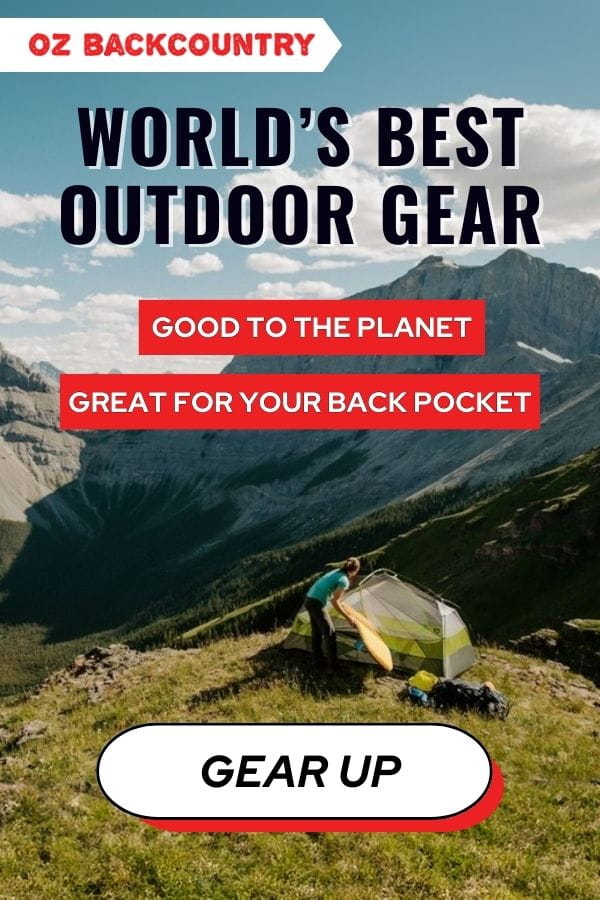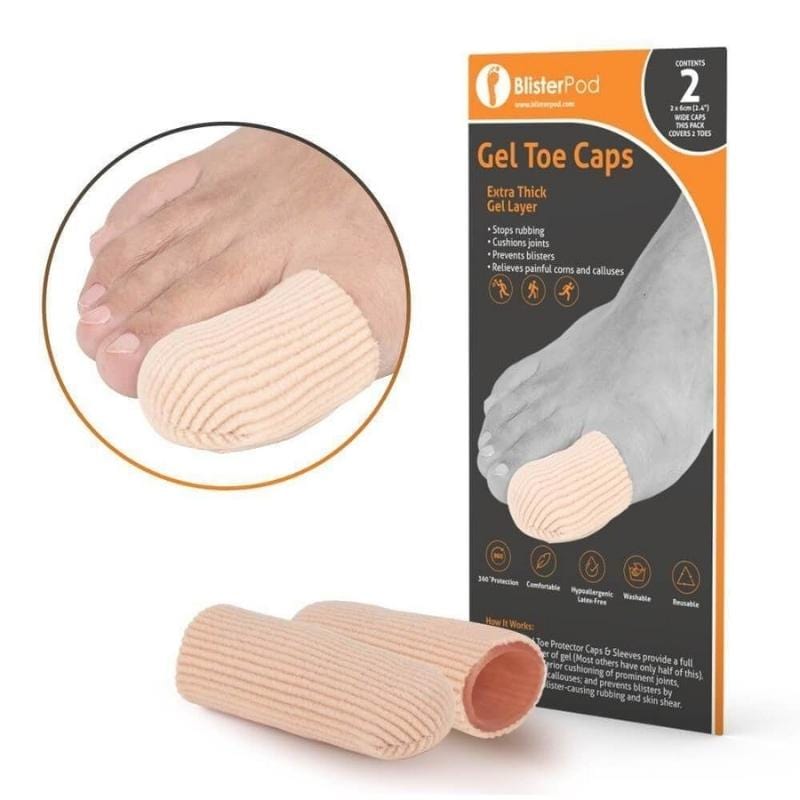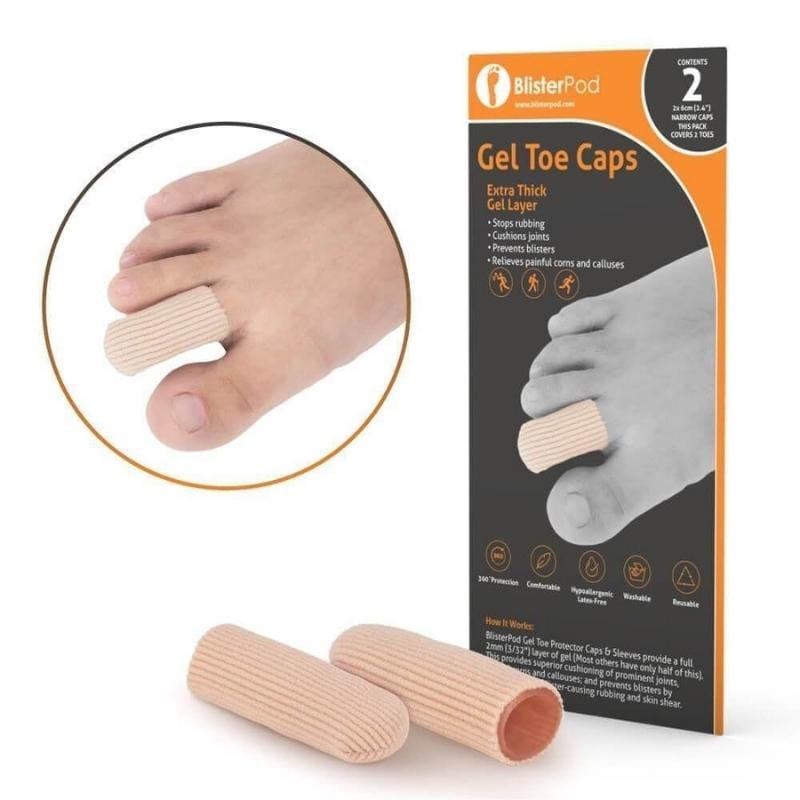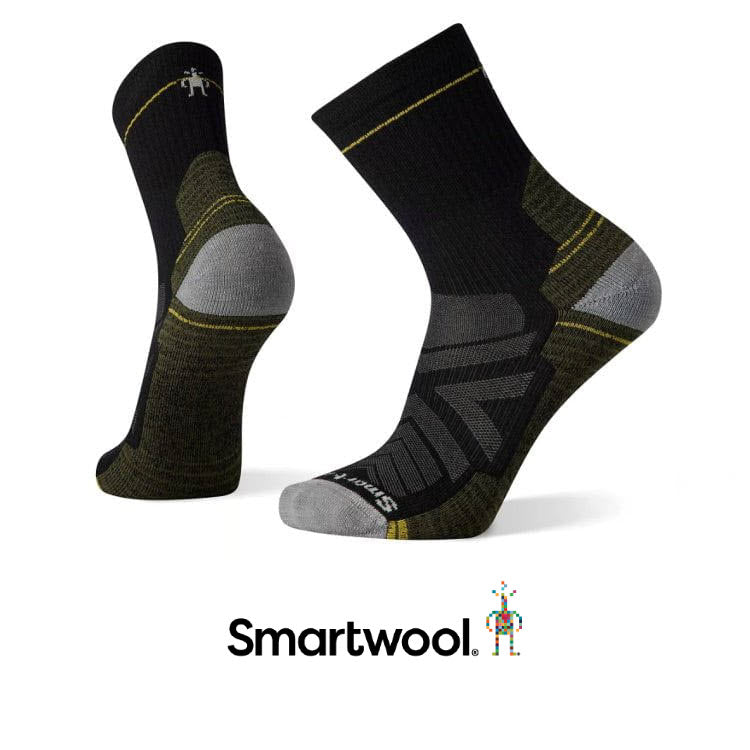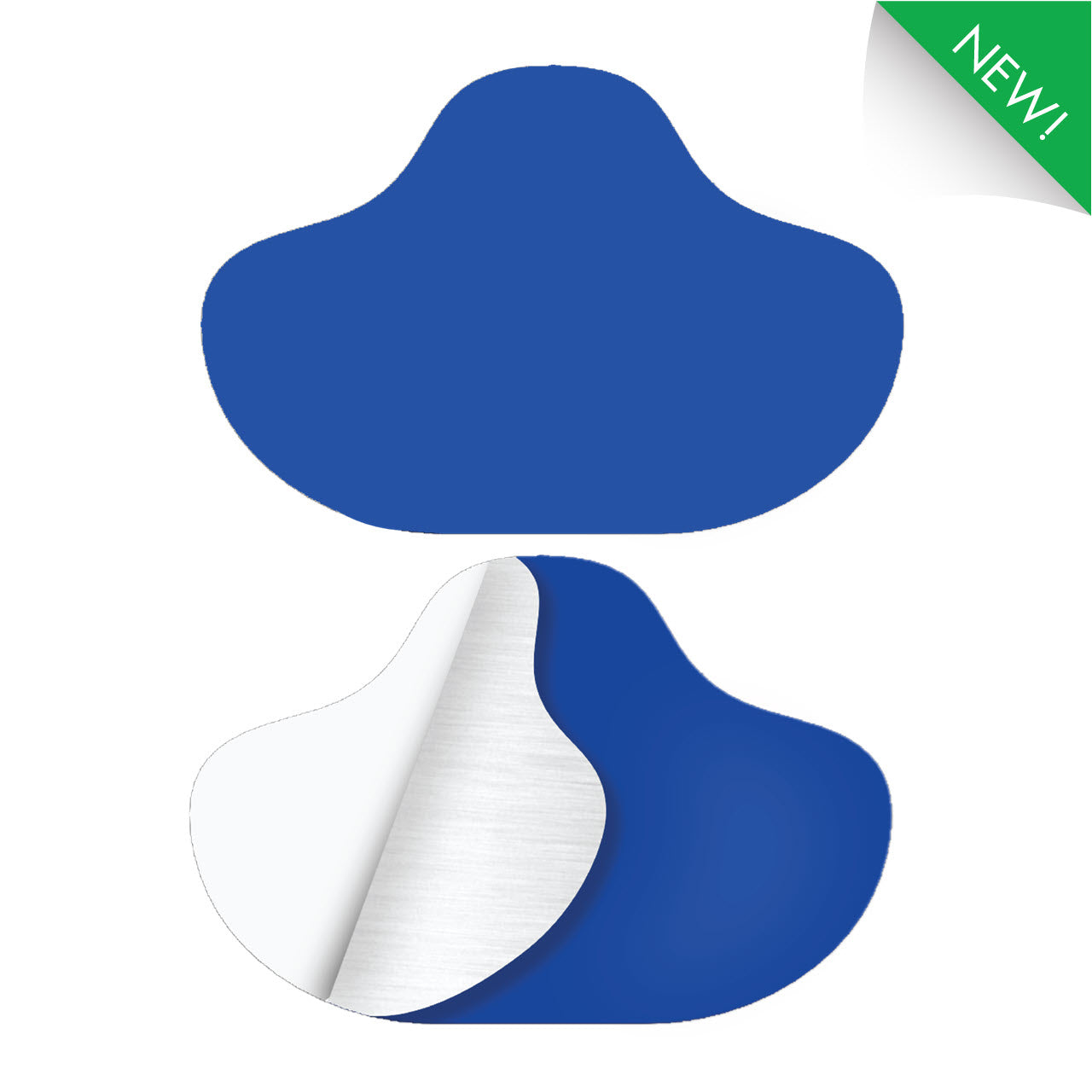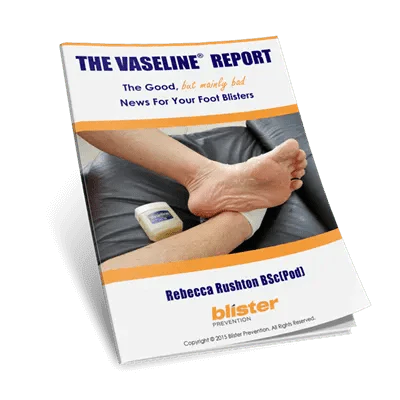The area of a shoe that houses your toes is called the toe box. When shoes hurt your toes, most people think they need shoes with a wide toe box. While this may be true for some toe problems like interdigital corns, blisters between toes and blisters on the outside of the pinky toe, almost nobody thinks about toe box depth. Arguably, a deep toe box is even more important to overall comfort than toe box width. So how do you find shoes with a wide toe box or a deeper one than you have now? Let's find out. Note: This article first appeared on Bartold Clinical (Nov 2020)
Toes Of All Shapes and Sizes
There are many ways to adjust a shoe around the midfoot and even forefoot. Laces, Velcro and buckles do exactly this. In contrast, a shoe’s toebox is a relatively finite and non-adjustable space. Sure, it can be flexible. The mesh uppers of running shoes have a certain amount of flexibility – at least where there are no seams or decorative patches and stitching. On the other hand, leather upper athletic shoes and hiking boots provide less flexibility. The steel toe caps in work boots obviously have no toe box flexibility at all. Putting variations in toe parabola to the side, the toe box is required to house toes of all shapes and sizes from:
- Narrow and wide feet
- Hammertoes and claw toes
- Trigger toes and hypertextended interphalangeal joints (IPJ) of the big toes
- Adductovarus 5th toes
- Bunions or hallux abductovalgus
- Extensor substitution
- Swelling
It’s clear to see, some people have the need for more space in toe boxes than others. Some need more toe box width, others need more toe box depth than perhaps the average shoe provides. So, how do you find a shoe with this extra toe box width and/or depth?
Toe Box Sizing
We buy footwear based on their numerical size which is based on length. For example, I'm a Ladies size 6. If we're lucky, we get a couple of forefoot width options, like Ladies 6B or 6D. Orthopedic shoes can be available with a range of narrow to wide forefoot widths: A, B, C, D, E, EE or EEE. So that's overall length and forefoot width sizing. Great! But what are the sizing options for toe box width and depth?
You're not going to believe this, but there isn't one!
The only way to find a shoe with more room in the toe box is to:
- Eyeball it
- Put them on and see if they feel wider or deeper than what you've already got
It’s quite important that you try footwear on before you buy it and see how it feels - buying shoes online is fraught with danger. A good walk around the shoe store or run on the treadmill will soon highlight any gross inadequacies in the toe box. However, a quick look and feel doesn't always indicate how well the toebox accommodates one’s toes over a longer time frame. Rather than guessing, wouldn’t it be helpful for all shoes to have a toebox size or ratio or score of some sort, to help with purchasing decisions? Something like there is for forefoot width (A, B, C, D, E, EE, EEE). Or perhaps a ratio to shoe length or some other standardised measure. So, if you had a hammertoe or hyperextended IPJ and you knew a toebox depth ratio of, let’s say, 0.6 gave your toes trouble, you could immediately dismiss all shoes but those with a score of 0.7 or above. Some would say this is unnecessary – that all you need to do is go shoe shopping late in the day when your feet are more swollen. But in endurance athletic scenarios, this is not indicative. Even a half hour run on the store’s treadmill at the end of the day cannot truly simulate the fit within the toebox after several hours or days of walking, hiking or running.
How Do They Handle It At Multiday Endurance Events?
Provide foot care at any endurance event and you’ll see your fair share of foot blisters, particularly toe blisters. I like to go to 6-day ultramarathons just for the exposure to blisters, my special interest area. Blisters at multiday staged and continuous ultramarathons can be nasty – even race-ending. The need for effective education and management, both before and during the race, is immense. For example, 73% of foot care presentations at the 2011 48-hour Oxfam Trailwalker event were for foot blisters . Similarly, 76% of medical cases at a 4-day ultramarathon event were for foot blisters . At a staged 6-day ultramarathon in the Simpson Desert in 2016, 85% of visits to the medical tent were for foot blisters . Research and experience shows that the toes are the most common blister location. Interdigital blisters, pinch blisters, lateral fifth toe blisters, dorsal toe blisters and blisters under the toenails in particular. Why are they so common? The two most significant contributors to toe blisters in endurance activities are swelling and the confines of the toebox.
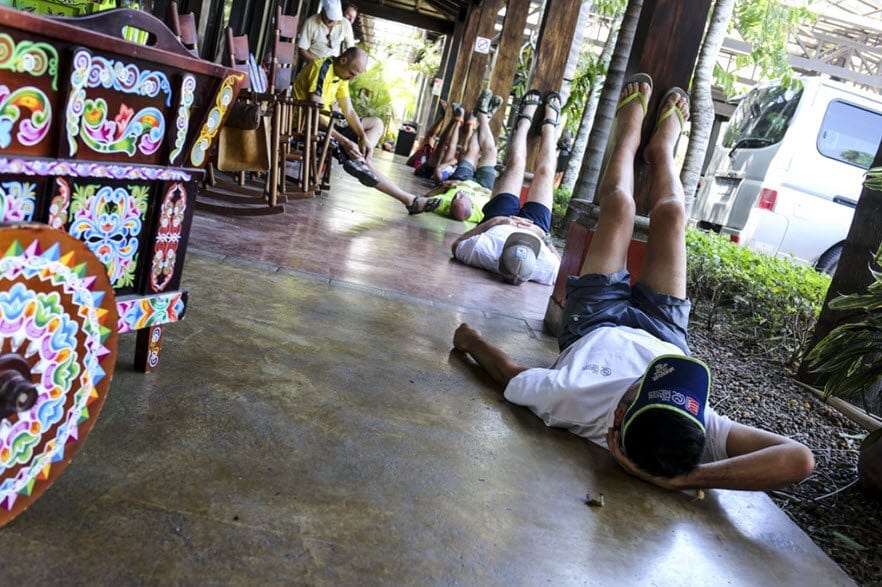
Runners in a staged ultramarathon know that elevation is important to reduce foot swelling between stages. ©iancorless.com – all rights reserved
From the end of day two onwards, generally, there can be very little available space in the toe box due to swelling, particularly in width. Obviously, most blister prevention or treatment interventions take up room in the toebox. Toe taping, dressings, paddings, gel toe sleeves, thick socks, double-socks – they all take up room, albeit very little. Toesocks, in particular, are popular among multiday hikers and runners. They have an obvious preventive effect on interdigital and pinch blisters because of the two layers of sock in the interdigital space where usually there is none. But they also have an obvious space-occupying effect. Perhaps more than one realises. Overall, implementing blister prevention and treatment can cause more problems than they fix. So, how do runners deal with the finite toebox volume when it becomes inadequate? How can they find a deep / wide toe box.
1) Multiple Pairs Of Shoes & Shoes That Are Too Big
Very few runners wear the same shoes for the whole six days (in a continuous 6-day ultramarathon, as opposed to a staged race). Most bring 2, 3 or even 6 pairs of running shoes. This is made possible by the fact that these races involve running the same loop, and their tent accommodation is trackside. So, it’s easy to pop into the tent for a quick shoe change, bite to eat, short nap etc. The purpose of multiple pairs of shoes is to have one or more back-ups if one pair gets wet or damaged or presses on a blistered toe for example. Everyone brings a shoe, especially chosen because it feels wider or deeper in the toebox, even if it just an older pair that are a little more stretched in this area. And almost everyone will have shoes that are 1-2 sizes larger than normal, just to accommodate the extra forefoot and toe volume. This is one way to gain extra toe box depth and width, with obvious drawbacks.
2) Toe Box Modifications
It’s not unusual towards the end of races to see people running in shoes with bits cut out of the toe box. When the need for significant blister relief is required in the presence of swelling and a finite amount of toebox space, runners start cutting holes in the shoe. From a little square to allow a toe to bulge out, to the whole toebox being removed. This is what is required to make room for swollen and/or blistered toes. It’s done with a full understanding of the potential for water and foreign objects to get into the shoe while running, such is the desperation for more toe box width and/or depth.
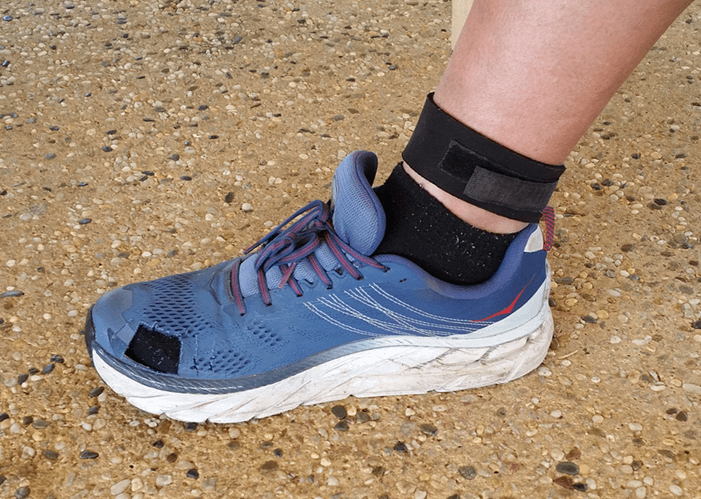
Minor toebox modifications
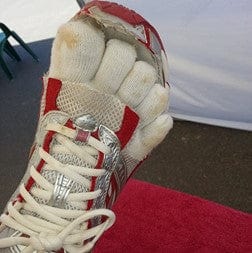
Image: The runner above had each toe taped with kinesiology tape and wore toe-socks in an effort to prevent toe blisters. But well before the end of the six days, she had to cut the toebox upper away completely. You can see that at the end of the race, there would have been room for about 3 ½ toes at most in that toebox.
Which Shoes Have More Room In The Toe Box?
Altra and Topo are popular among ultrarunners, particularly for their toe box. Certainly, they both look a bit wider in the toe box than most other brands. Perhaps they look a bit deeper too – it’s hard to say. A quick scan of the Altra and Topo websites doesn’t provide any specific information about toe box dimensions other than an obvious visual representation. Which brings us back to how helpful it would be to have a toe box width and depth size or ratio or score for shoes. So, I put the question to the athletic shoe expert from Bartold Clinical, Simon Bartold. Simon confirmed that even the most basic measure, that of shoe size, is surprisingly a bit of a dog’s breakfast . There really is no agreed-upon objective, repeatable, reliable or universally-used way to measure shoe length. Let alone forefoot width. Let alone the topic of this article, toe box depth and width.
These systems are a complete mess with almost zero accuracy with regards to scaling for length and sizing of athletic footwear.
It’s difficult to imagine how this could be so – with all the money and technology around this industry. But it’s the reality. So, with the measure of shoe size and forefoot width unreliable, it seems any measure for the toebox is a long way off. Right now, I would love to know whether Altra or Topo have the widest and deepest toebox. And on a daily basis, I would love to refer my patients to toe box measures to help them choose the right shoes for their specific toe structural or functional issues. For now, it’s impossible. Sure, it comes down to “feel” for the individual. But when you’re looking to find a new shoe because your current shoes are not accommodating your toes adequately, it would help to know where to start looking.
References
- Nigg, B, Baltich, J, Hoerzer, S & Enders, H. (2015). Running shoes and running injuries: Mythbusting and a proposal for two new paradigms: ‘Preferred movement path’ and ‘comfort filter’. British Journal of Sports Medicine. 49(20): 1290–1294
- Oxfam Trailwalker Australia. 2020. Retrieved from https://www.oxfam.org.au/organizer/trailwalker/
- Scheer BV, Reljic D, Murray A, et al. (2014). The enemy of the feet blisters in ultraendurance runners. Journal of the American Podiatric Medical Association. 104(5): 473-478
- Rushton, R. 2016. Blister Prevention Blog. Retrieved from https://blisterprevention.com.au/big-red-run-2016/
- Bartold, B. 2020. Bartold Clinical Blog. Retrieved from https://www.bartoldclinical.com/toebox-width-depth-is-there-a-solution-to-prevent-blisters/


